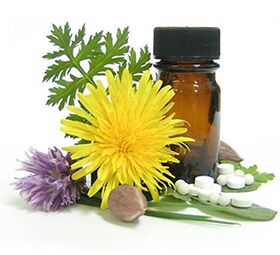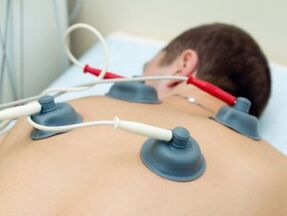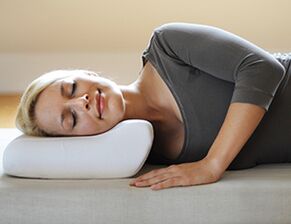
As is known, osteochondrosis is a chronic pathology caused by degenerative changes in the structure of the spine. Unfortunately, 8 out of 10 adults suffer from osteochondrosis.
Pathology can begin in youth (20-25 years old), gradually becomes complicated with new manifestations. In general, lumbar, thoracic and cervical osteochondrosis are distinguished.
Symptoms of the disease
Osteochondrotic lesions of the cervical spine are characterized by:
- Dull pain in the neck and back of the head (cervicalgia);
- If the vertebral artery is damaged, then the activity of the nerve centers responsible for the normalization of pressure indicators is disrupted, so hypertension is often a concomitant pathology of osteochondrosis;
- During the development of cervical osteochondrosis, compression of the spinal artery occurs, which causes symptoms such as extraneous sounds in the ears, dizziness and visual disturbances, paroxysmal painful headaches;
- Heart pain similar to the pain of angina pectoris, spreading to the shoulder blade and neck.
Lumbar osteochondrosis is characterized by symptoms:
- Severe pain caused by compression of the roots of the spinal nerve, as well as the venous-arterial pathways that supply the spinal cord;
- When the roots of the lower back are affected, the disease is accompanied by burning pain along the outer side of the legs, which turns into a decrease in sensitivity of this region;
- Most often, lumbar osteochondrosis manifests itself with shooting pain from the lower back to the legs, then this symptom is replaced by a decrease in sensitivity in the lower extremities;
- With the development of complications in the form of intervertebral hernia, manifestations such as weakness in the legs, back pain, decreased muscle tone and sensitivity of the legs, weakness of the leg muscles (paresis) occur.
Manifestations of thoracic osteochondrosis:
- With upper lesions, pain is observed in the abdomen, chest, shoulder and scapula;
- Lower lesions are accompanied by a decrease in the sensitivity of the lower thoracic vertebrae, accompanied by dysfunction of the pelvic organs. Pain increases when moving or sneezing;
- Rarely, thoracic osteochondrosis causes compression of the spine, which is characterized by local girdle pain radiating to the intercostal space, abdomen, groin or lower limbs, weakness and numbness in the legs, and dysfunction of the pelvic organs.

Treatment options
A number of therapeutic methods are used in the treatment of osteochondrosis:
- Drug therapy;
- Physiotherapy (massage procedures, physiotherapy, etc. );
- Diet therapy;
- Corrective therapy;
- Ethnoscience;
- Surgery.
How to treat cervical, thoracic and lumbar osteochondrosis at home
Each of the methods of anti-osteochondrosis therapy aims to relieve pain, normalize the course of vertebral structural processes and restore radicular spine activity.
Drug therapy
Drug treatment for osteochondrosis is based on several directions:
- Symptomatic therapy is aimed at relieving pain and includes taking anti-inflammatory drugs. In addition to anti-inflammatory drugs, patients are prescribed muscle relaxants from the muscle relaxant group;
- Treatment aimed at normalizing blood circulation involves the use of vasodilators;
- Regenerative therapy of cartilage tissue is based on the use of chondroprotective drugs;
- Vitamin therapy is based on taking vitamin complexes;
- Treatment with antidepressants is used to relieve anxiety and depressive states, which often occur in patients against the background of limited movement and pain originating from osteochondrosis.
- Therapy with herbal preparations often helps to significantly alleviate the condition of patients, because such drugs restore immune defense, sleep and body strength, and prevent depression.

Physiotherapy activities
Physiotherapy measures that are very effective in the fight against osteochondrosis are:
- helps to eliminate pain syndrome;
- increase the amplitude of motor capabilities;
- Improve and facilitate the course of immune processes;
- normalize blood circulation;
- Normalize metabolic processes;
- Ensure reduction of the therapeutic dose of nonsteroidal anti-inflammatory drugs and analgesics.
There are many types of physiotherapy. The following are most often used in the treatment of anti-osteochondrosis:
- Electrotherapy involves conducting procedures related to the effect of electric current, such as electrophoresis, galvanization, electrosleep, darsonvalization, and others using special devices;
- Shock wave therapy is performed with devices that convert an electric pulse into an ultrasound wave, which acts on the spine affected by osteochondrosis, accelerates the healing of damaged bone and cartilage tissue, relieves pain and swelling;
- Balneotherapy involves the use of mineral waters and mud, after exposure blood supply improves, pain decreases and material metabolism normalizes;
- Magnetotherapy - this device is based on the use of a stable magnetic field created by special inductors placed in the affected vertebral areas;
- Laser therapy is based on the use of special lasers that affect the affected tissues and help them regenerate.
All physiotherapeutic methods provide symptomatic treatment of osteochondrosis, relieve inflammation and pain, reduce the course of treatment and the dose of drugs taken.
Diet
Since anti-osteochondrosis therapy is complex, a rational balanced diet is required.
For patients with this disease, it is extremely important to limit the intake of liquid, salt and simple carbohydrates. It is necessary to exclude from the diet:
- Alcohol;
- Beverages such as cocoa, coffee and strong tea;
- Sour and spicy foods;
- Products rich in extractives (mushrooms, oily fish, poultry, meat, etc. ).
Since osteochondrosis causes the destruction of intervertebral cartilages, their restoration requires animal proteins rich in dairy products, lean fish or meat.
Jellied meat or broth made from boiled bones of beef or pork is especially useful for such patients. This broth is rich in collagens, which provide extra strength to bone and cartilage tissue.

Exercises that improve health
Therapeutic exercises play an equally important role in the treatment of osteochondrosis, moreover, it is considered the most effective method of combating the destruction of bone and cartilage cells, helps to strengthen muscle and joint tissues, ensures the mobility of the spine and promotes its recovery. damaged tissues.
A few simple conditions should be followed when performing physiotherapy exercises:
- Movements should not cause severe pain attacks or any discomfort, if such an effect occurs, the situation should be discussed with a doctor;
- You cannot do exercises during the exacerbation of the disease, otherwise the pain symptom may increase or complications may develop;
- You should perform the exercises smoothly, avoiding sudden movements.
The necessary set of exercises is selected by the doctor according to the patient's condition and the degree of development of osteochondrosis.
Massage
Massage procedures help improve blood circulation and have a relaxing effect on the patient's muscles. The massage begins with light caresses, then moves to rubbing and kneading. Massage can be done with your hands or using special objects such as jars.
Cupping massage for osteochondrosis helps to relieve muscle tension and activate metabolic processes in the affected tissues due to improved blood flow and lymph flow. Acupressure, which involves influencing active spinal points, has no less therapeutic effect.
ethnoscience
Traditional medicine, which has many recipes for various rubs and compresses, can also help in the treatment of osteochondrosis. It is possible to relieve pain and relax muscles thanks to folk remedies that increase blood flow.
These tools are based on:
- Essential oils (fir, etc. );
- Melted pork;
- camphor alcohol;
- Badger oil;
- honey;
- Poison of bees, snakes;
- Medicinal roots and herbs such as aloe, birch or horseradish leaves, garlic, ginger, red pepper.
They are combined with alcohol, iodine and turpentine, which causes a local irritating effect. Mustard baths (200 grams of powder in a water bath) are excellent for relieving sudden sharp pains.

Orthopedic accessories
A good addition to home treatment for osteochondrosis will be the use of orthopedic accessories that ensure complete relaxation of the spine during night rest.
Therefore, you should take a correct and comfortable body position while sleeping.
High-quality mattresses and orthopedic pillows can help in this. Thanks to the use of such devices, the spine will be completely relaxed at night, which will eliminate the symptoms and improve the patient's condition.
Osteochondrosis can be treated independently, the main thing is to observe the regularity, sequence, complexity of the procedures and coordinate all actions with a specialist.



















